Flexible workspaces are a compelling proposition in today’s fast-paced world. Demand for such spaces is increasing in India as these offer the flexibility to companies to scale up operations without taking away their focus from their core activities.
In an interview Neetish Sarda, founder, Smartworks, a provider of co-working spaces discusses market trends, key feature of their offering and more. Edited excerpts:
What will be some of the key trends for 2019 in agile workspaces (or large companies opting for co-working spaces)?
Agile workspaces have seen market double over the previous year. The growth has sustained throughout the year and is expected to continue in 2019. A recent report by Colliers points out that office leasing momentum is expected to continue over 2019 -2021 and reaffirms average annual gross absorption of 14.5 million sq feet.
Here are a few key trends expected in 2019:
This has been the fastest growing segment within the commercial office space. A report by CBRE, titled ‘Exploiting the Agile Revolution: Prospects for Landlords and Investors,’ flexible space operators have grown rapidly in recent years, reaching a total footprint of just under 40 million sq. ft. as of H1 2018 in 16 major Asia Pacific cities including Bangalore, Mumbai and Delhi NCR. As of June 2018, China and India are the two largest markets for flexible space in the Asia Pacific.
Flexible space has its origins as a shared service for start-ups and smaller tenants. More recently, however, it has been utilised by larger companies seeking to increase the flexibility of their portfolios amid what is an increasingly complex and volatile business environment. More than 80% of our clients include enterprises like Amazon, OLX, Microsoft, Tata Communications.
The growth in agile workspaces today is fuelled by multi-sectoral growth, which includes technology, banking, e-commerce and insurance among others.
Coworking spaces also translate to cost savings – corporates can save around 25-40% compared to leased properties. Some developers are choosing to walk the path alone and launch their own coworking space initiatives. This trend is likely to continue in the office leasing market.
Thirdly, tier II markets are likely to see bigger growth in co-working spaces. Finally, productivity at the workplace is another aspect that is going to see a huge shift at co-working spaces.
Is the gig economy primarily driving the need for managed workspaces?
Gig economy is a way to work or conduct business in a borderless and technology-enabled market where businesses and professionals collaborate on a particular project. Coworking spaces provide that space where companies, entrepreneurs, freelancers and startups come together to share a collaborative experience.
However, with the ongoing growth of agile workspaces, the factor of the gig economy has a smaller role to play as these offices are increasingly becoming enterprise focused. There are various deals where we have seen an enterprise take up an entire floor or even a building.
What’s the USP of Smartworks offering?
In a short span of two years, we have scaled up to cover over 1.5 mn+ sq.ft across nine cities. Our differentiation hinges on a focus on enterprise clients. More than 80% of Smartworks’ clients comprise large corporates like Tata Communications, Microsoft, Arcelor Mittal, Amazon,Carrier, Otis, Daikin, Lenovo, Bacardi, DHL and OLX among others.
We provide focussed programs for networking and collaboration through an array of events like pet therapy, indoor games, tournaments and stand-up comedy.
Facilities like a creche, gyms, meditation, chair yoga, pet therapy, yoga classes and live music are some examples which ensure an overall productive office experience across our centres. Besides, we have deployed a robot called Mitri that manages the visitor management system at every facility.
Is the trend of shared offices restricted to large metros and multinationals or do you see demand coming from smaller cities and local companies as well?
The trend is picking up in many tier II cities as well today. We have seen the growth of the market in cities like Pune, Kolkata, Chennai and Hyderabad. In Chennai, we are opening up our third centre which will be operational by early next year and have a total seating capacity of 5000+ people.
Kolkata, as a recent report by Colliers points out, has seen the highest leasing in the past six months and one of our largest centres is present in Kolkata. We plan to continue our expansion in tier II cities.
What are your plans for the next 3 to 5 years?
We are extremely bullish, especially in South & West regions and this year itself we have added inventory to our key markets in Mumbai and Bengaluru. We aim to reach at least 10 million sq ft in terms of our overall footprint in India by 2022.



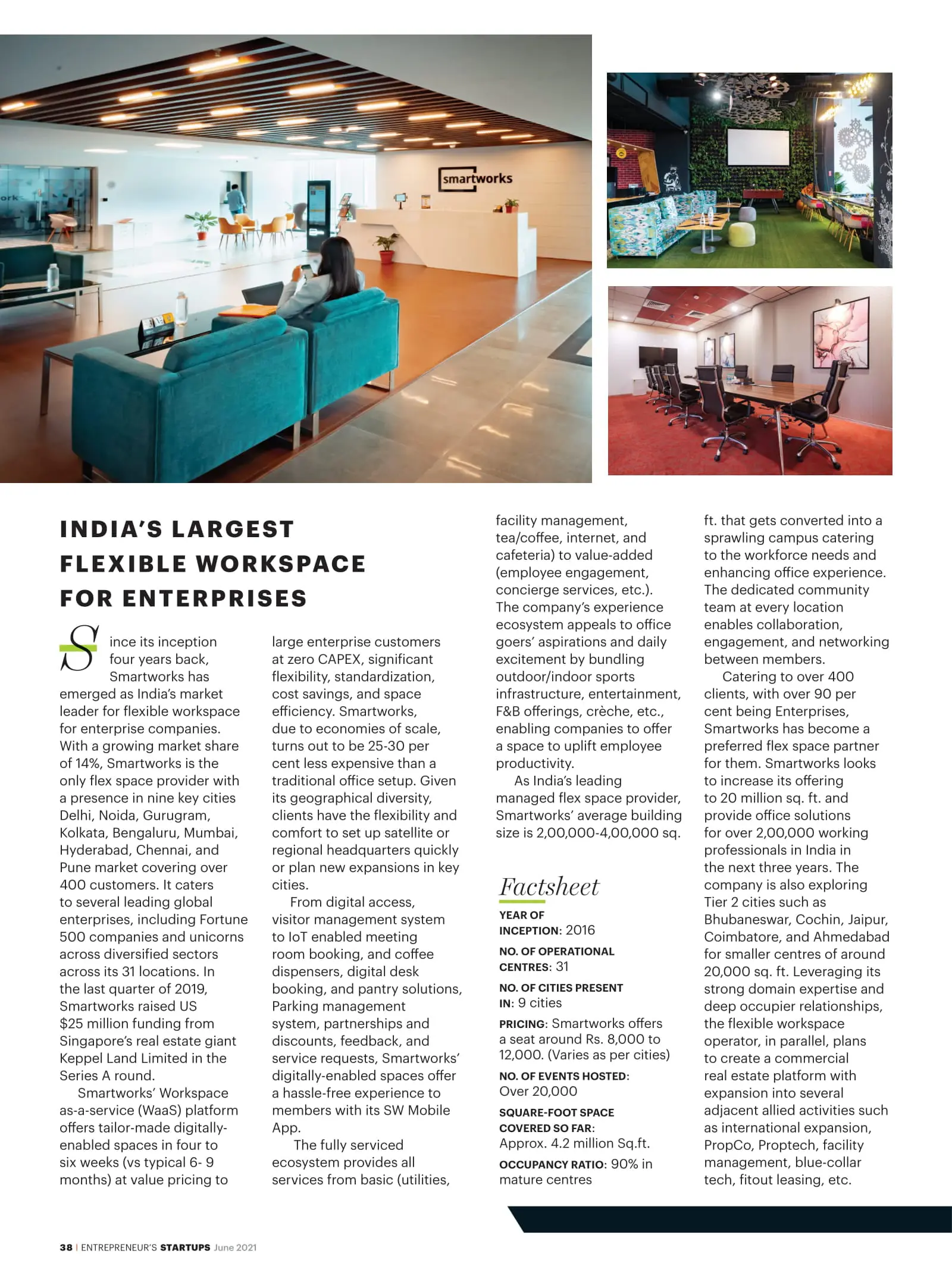
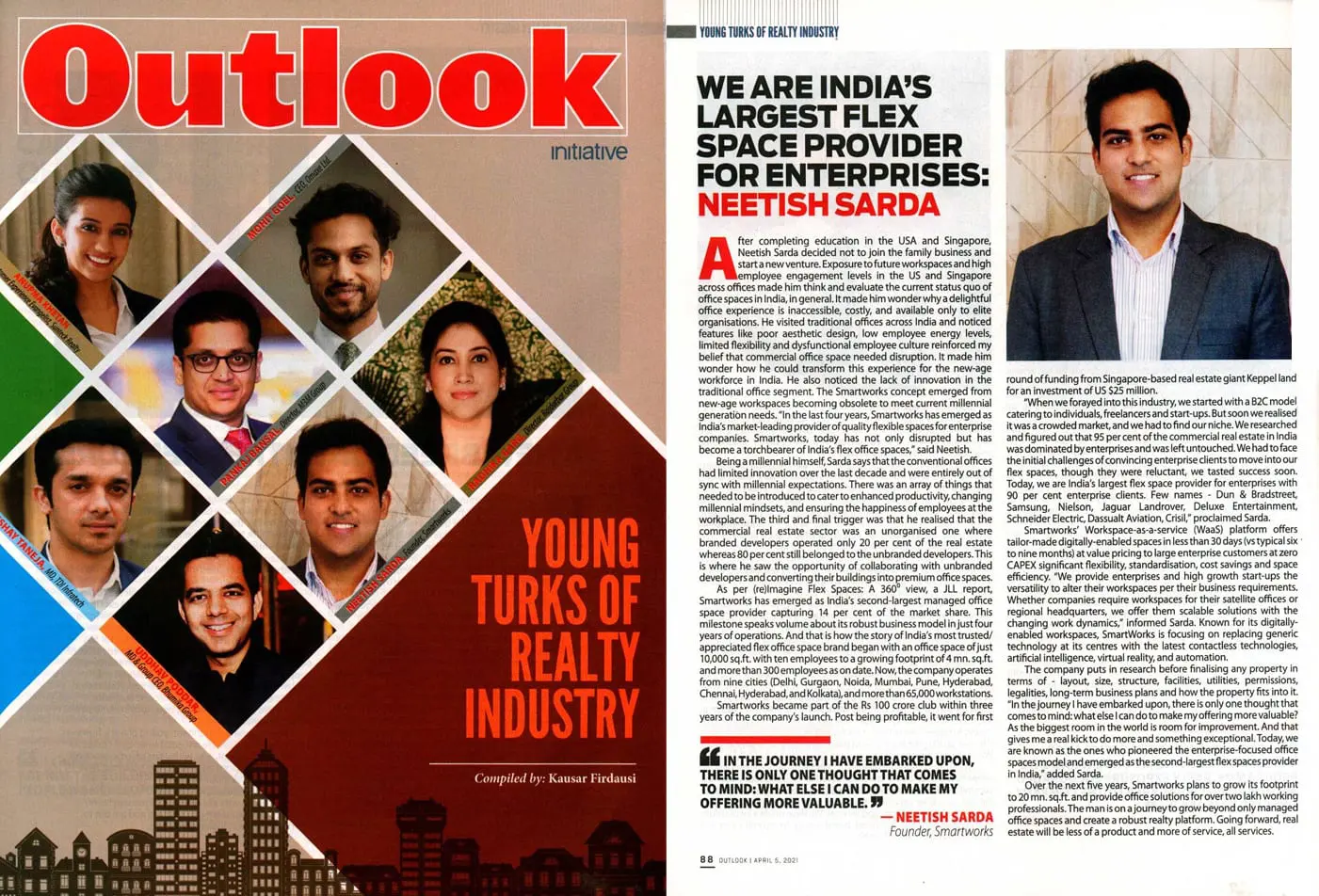

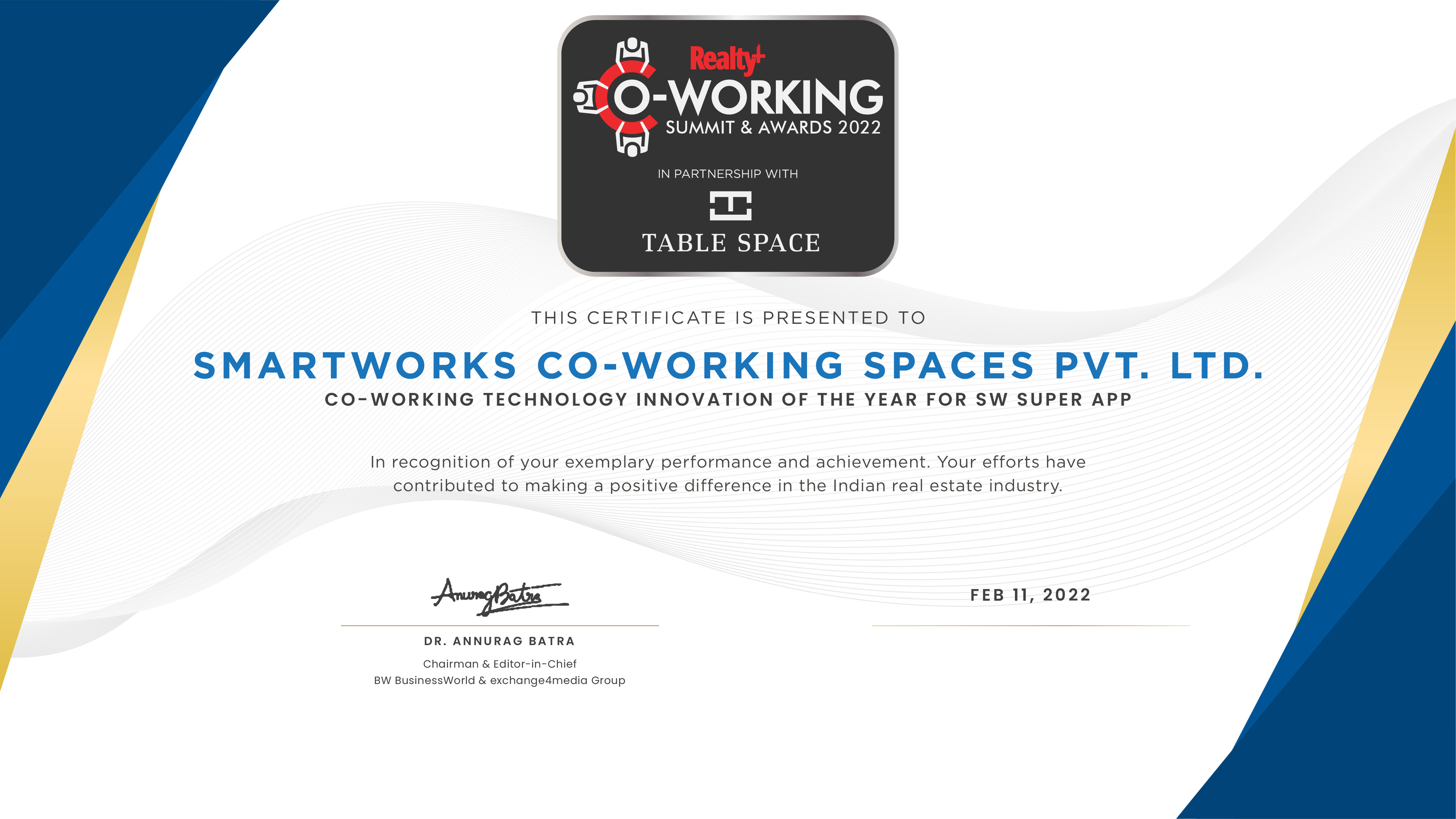
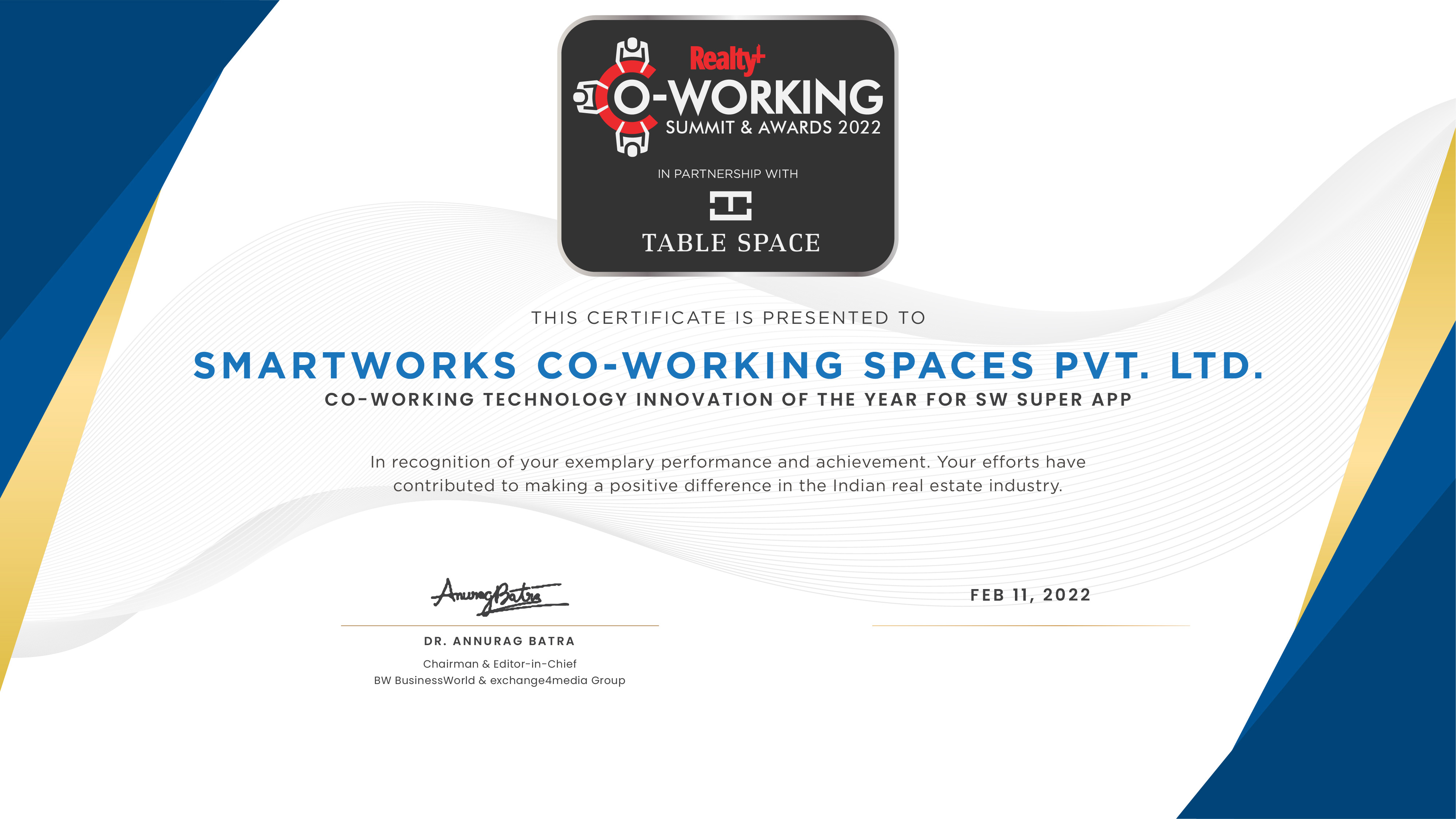
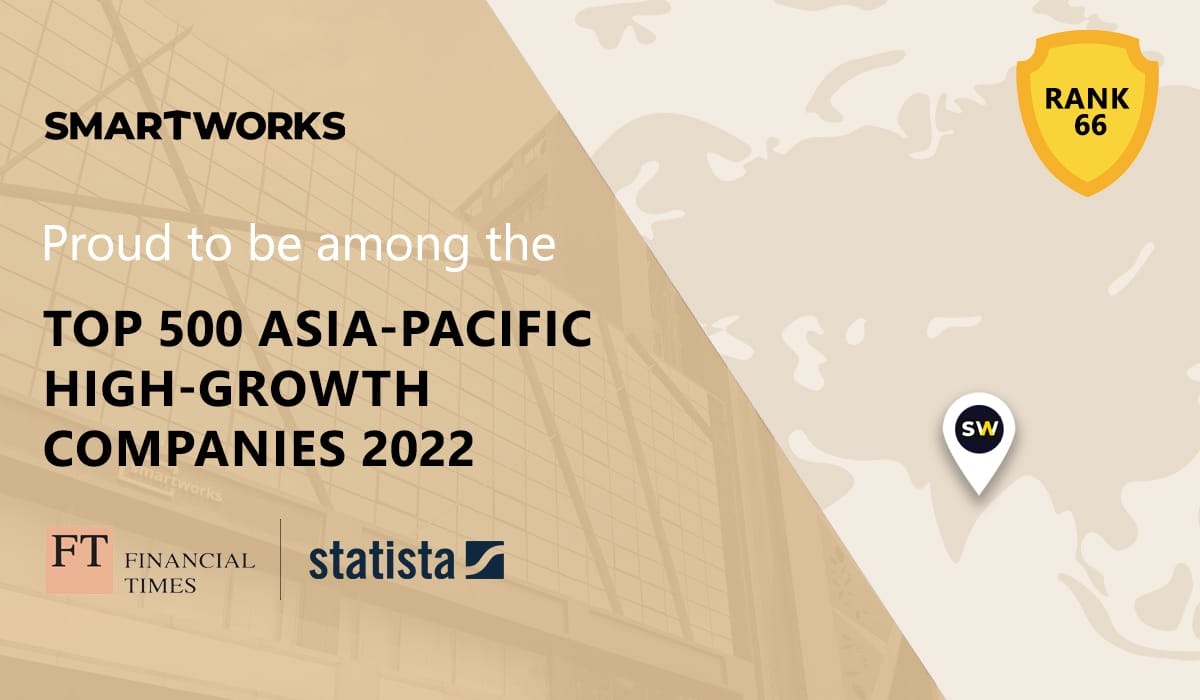



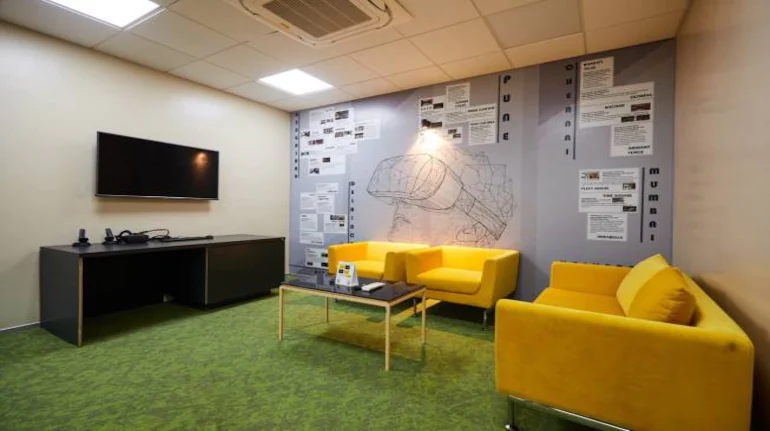




.jpg)



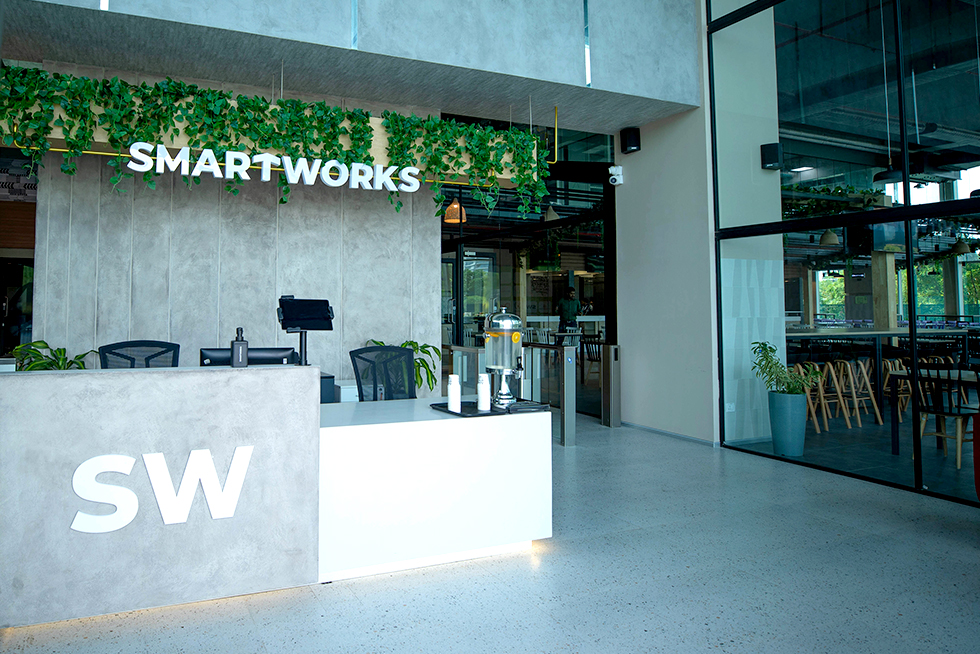
.webp)
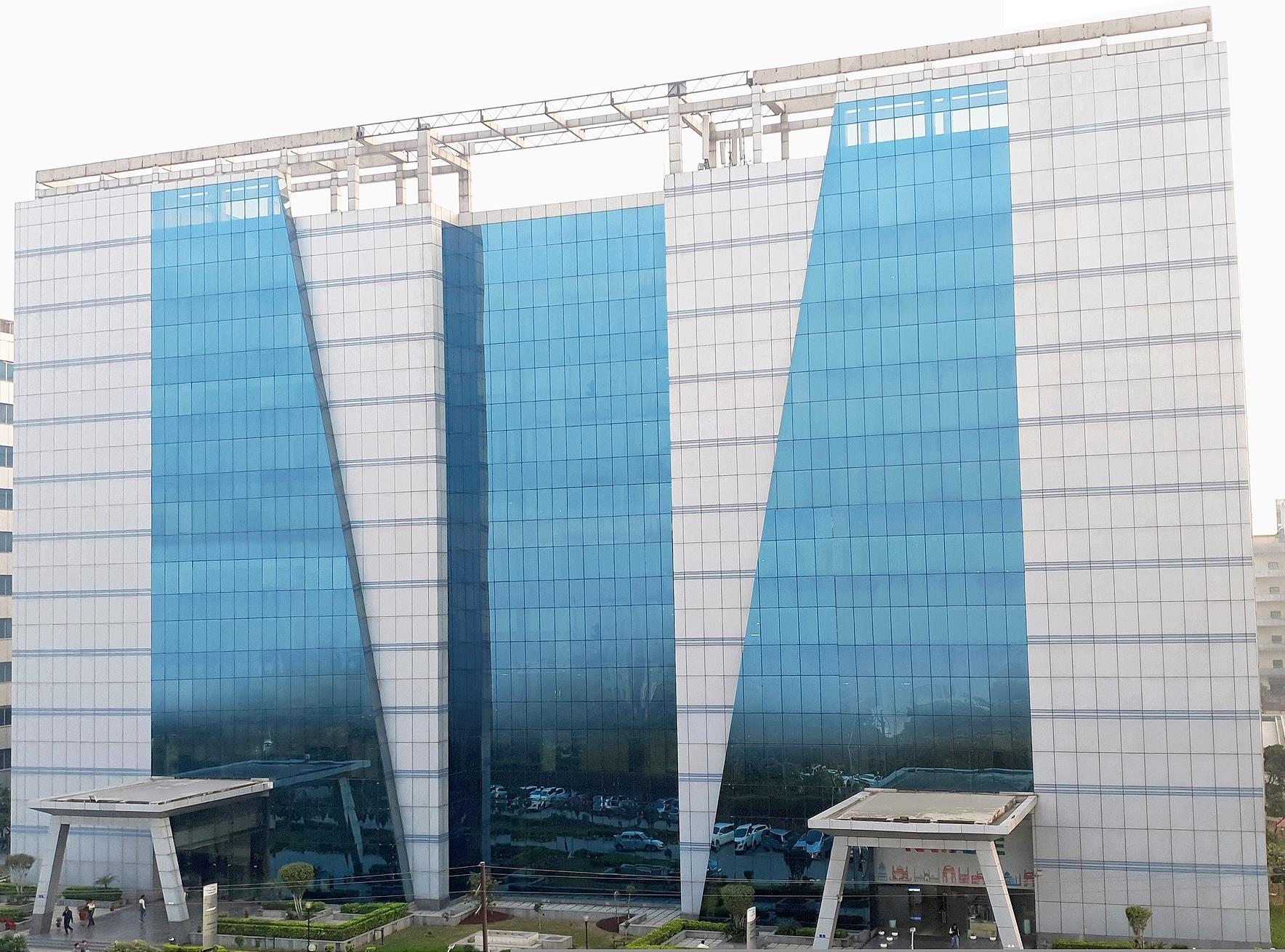
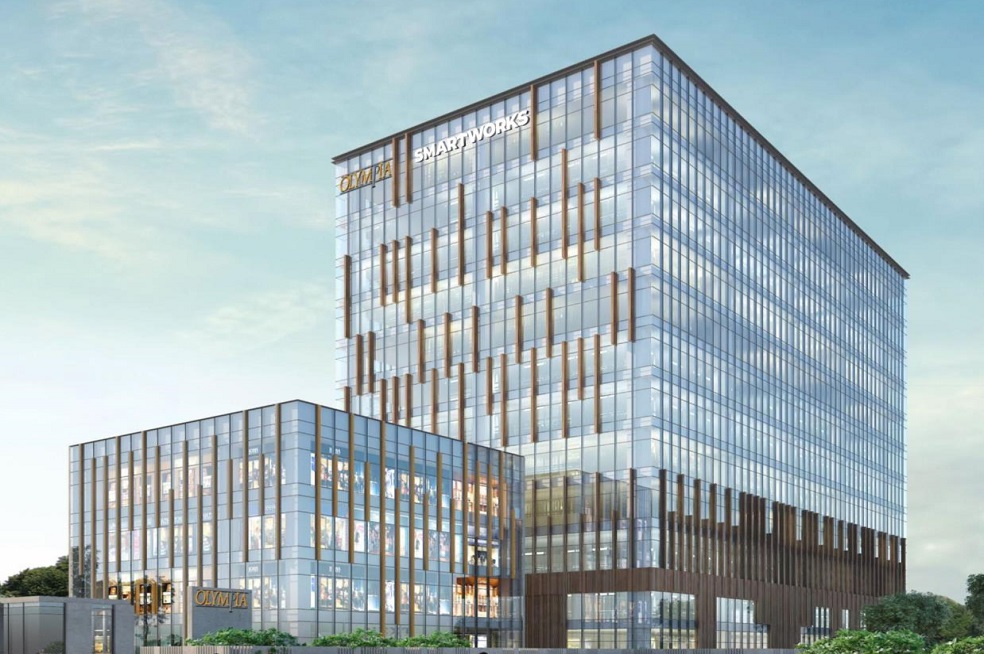


(1).jpg)
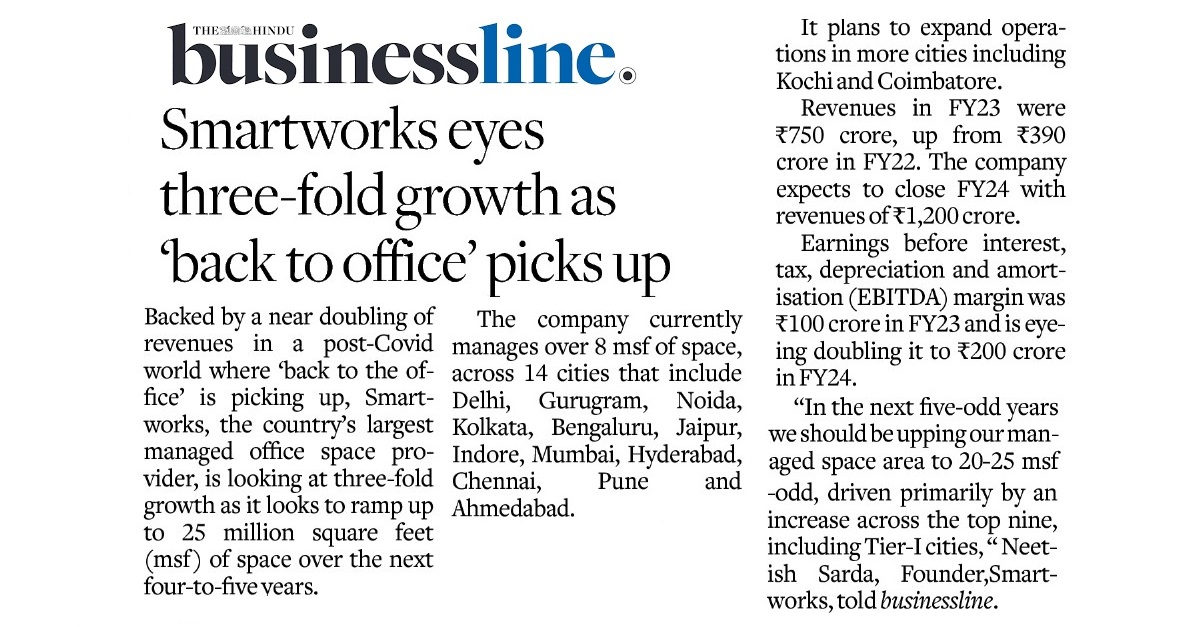
.png)
